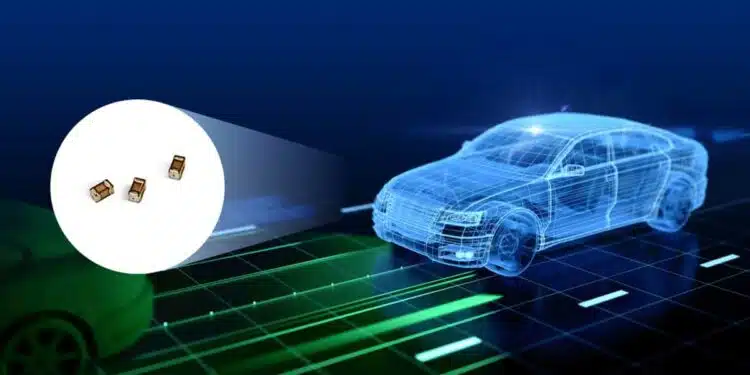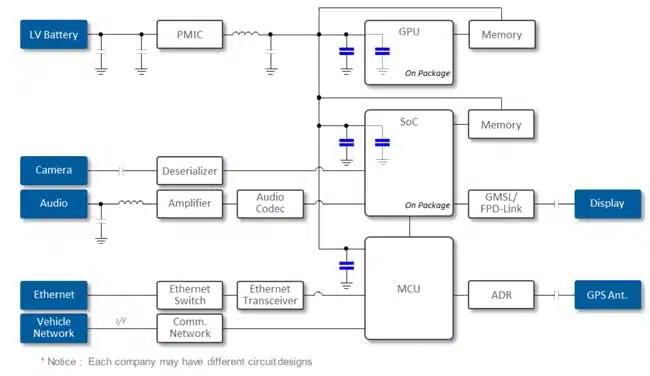Samsung Electro-Mechanics is releasing CL10Z106MP96PN# MLCC capacitors, which implement a capacitance of 10uF at a rated voltage of 10V in a 0603 inch (1.6×0.8mm) size and X7T specifications (temperature range: -55 to 125C) ideal for automotive ADAS ECU applications.
This World’s first MLCC capacitor in its size and features is now in mass production. Samples are now available upon request.
As the trend toward high integration, high density, and miniaturization of ADAS Radar, LiDAR, HPC, IVI communication (WiFi/BT/5G/NAD) modules and SiP modules continues to spread, the demand for miniaturization of multilayer ceramic capacitors (MLCCs) has also been increasing.
This new product maintains the same capacitance and rated voltage as the existing 0805 inch (2.0×1.25mm) product, while reducing the size to 0603 inch (1.6×0.8mm). In doing so, it simultaneously meets the requirements for miniaturization, high capacitance design, high-temperature (125℃) stability, and voltage reliability for the given application.
Samsung Electro-Mechanics has strategically expanded its product coverage to include the 0603 inch (1.6×0.8mm) size, rated at 10V and 10μF, by leveraging proprietary advancements in the miniaturization of ceramic and electrode materials, coupled with ultra-precise stacking technology.
Application Example: ADAS (Advanced Driver Assistance System) ECU
The ongoing advancements in the performance of SoC/GPU semiconductor ICs utilized in ADAS ECUs have resulted in escalating demands for (ultra) high-capacitance and high-temperature products. Concurrently, the necessity for miniaturization has intensified to address the constraints posed by limited mounting space around ICs. The Samsung Electro-Mechanics X7* high-capacitance MLCCs, suitable for this application, ensure exceptional reliability even under high-temperature conditions.
Furthermore, we are committed to the continuous expansion and supply of our MLCC lineup, including sizes smaller than 0603 inch, to meet the diverse needs of our customers.
MLCC Trend : High Capacitance, High Temperature
- Miniaturization
High Reliability
→ Recommendation : X7* PN Series
| Size(inch/mm) | Rated Voltage[Vdc] | TCC | Capacitance | Part Number | MPStatus | SampleAvailability |
| 0402/1005 | 10 | X7S | 2.2㎌ | CL05Y225KP66PN# | NEW | Available |
| 0603/1608 | 10 | X7T | 10㎌ | CL10Z106MP96PN# | NEW | Available |
| 0805/2012 | 10 | X7R | 10㎌ | CL21B106KPY6PN# | In MP | Available |
| 1206/3216 | 10 | X7R | 22㎌ | CL31B226KPK6PN# | In MP | Available |
| 1210/3225 | 10 | X7S | 47㎌ | CL32Y476KPVVPN# | In MP | Available |
































